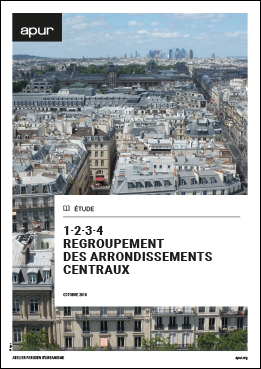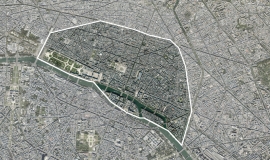This study presents the up-to-date situation of the four Central Districts and an urban analysis of the City Halls to help inform the debate about ways of implementing reform.

The February 28 2017 Law concerning the status of Paris planned for the amalgamation of Districts 1 to 4 by creating a single electoral and administrative area. This study aims to give a detailed, up-to-date account of the four Districts to help inform the debate about ways of implementing this reform (effective in 2020) in relation to specific developments affecting the centre of Paris. It sets out in detail the major issues facing these Districts through a socio-demographic, economic and urban analysis, which relates as much to the current situation as to long-term solutions and projects already underway. The transformation of the four City Halls themselves is one of the consequences of the reform. The study includes an urban analysis of the City Hall buildings, which can contribute to the debate about their future use.
The study has shown that the four Central Districts form a two-tier entity: on one hand they have global recognition and metropolitan-scale attractiveness and on the other a specific, dense, local fabric, giving each District its own, strong identity. The area is notable for its rich heritage and historical reference points, but it is also a ground-breaker in the matter of innovation, particularly public space. It benefits from the dynamics of a large number of projects. It is affected by issues linked to the decline in its residential population and the increase in unoccupied property. These changes underline the challenge of maintaining the residential function of the centre of Paris, which today sets it apart from other major world metropolises which have devolved in favour of business operations (London, New York). The area has a high percentage of facilities which will be boosted by projects underway. However, needs will have to be taken into consideration on both levels: local and global, because of the position the centre of Paris occupies in the metropolis and because of its attractivity.
What has emerged from the urban analysis of the City Halls is that overall they are very accessible. The resident population is higher around the 3rd District City Hall. The profile of inhabitants shows that there are more young people and families in the northern half of the 1234 area. The City Hall in the 4th District is integrated into a metropolitan system, through its proximity to public transport, its closeness to the Seine and to shops on the Rue de Rivoli. The City Hall in the 3rd District finds itself in a more localised, neighbourhood system, near the Carreau du Temple and a commercial fabric of a more local nature. The 2nd District City Hall is situated in the centre of an innovative ecosystem, a collection of unique sites (covered passages), close to the “Grands Boulevards”. The City Hall in the 1st District is incorporated into a network of open spaces and large-scale facilities (Louvre, the Seine, les Halles).
Apart from the administrative project, the amalgamation of the four Districts and the transformation of the City Halls will open up new prospects for the territory. The analysis has shown that these projects could draw on the following three fundamental elements: the two-tier, local and global scale, which forms a constant in the analysis; the Seine, an asset and territorial marker; innovation, the centre of Paris being a territory historically open to experimentation.



